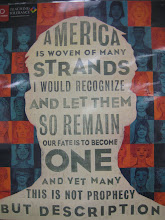Why do we constantly play the game of who-has-had-it-worse? When we get into discussions connecting cultural contexts and education, it sometimes seems like a contest where we think the “winner” will be the one who has overcome the toughest struggles. Yet how can we quantify conflict and contention? How can we make objective judgment calls on subjective scenarios? For example, how many English language learners feel inferior as they struggle to communicate with their children’s teachers or their landlords? How many special education students feel ridiculed and separated from their peers and classmates? How many homosexuals feel judged and suppressed by the society that surrounds them? Any of these scenarios would likely not make it into history books or even the nightly news; however, does the lack of publicity make their feelings less real? Less intense? It is not fair for us to rank the pain of others based solely on its visibility. Although there is not a special water fountain for children with disfigurements or a reserved back section of a bus for homosexuals, that does not mean their struggles have been less intense or should be in any way discredited. Lipman says that “Urban space is both a place and a cultural context of human actions” (p. 31). Human actions. Not White actions, not Black actions, not oppressive actions, not defiant actions. Human. And when it comes down to it, that is what we must recognize in each other: Our human right and ability to struggle and survive, to be tested and triumph.
Lipman, P. (2004). High Stakes Education. New York: RoutledgeFalmer.
Monday, September 28, 2009
Subscribe to:
Post Comments (Atom)

No comments:
Post a Comment